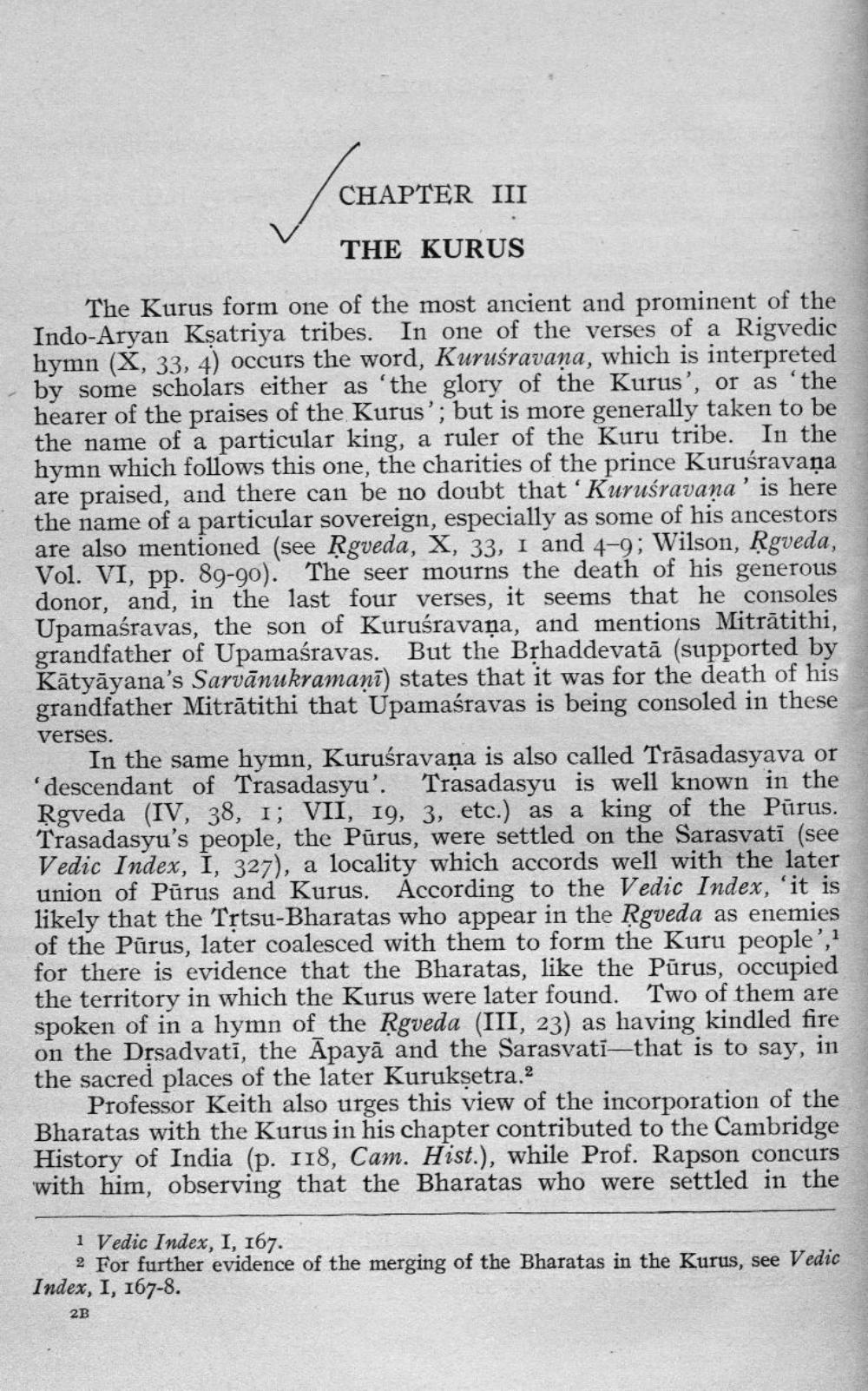________________
CHAPT
CHAPTER III
THE KURUS
The Kurus form one of the most ancient and prominent of the Indo-Aryan Kṣatriya tribes. In one of the verses of a Rigvedic hymn (X, 33, 4) occurs the word, Kuruśravana, which is interpreted by some scholars either as 'the glory of the Kurus', or as 'the hearer of the praises of the Kurus'; but is more generally taken to be the name of a particular king, a ruler of the Kuru tribe. In the hymn which follows this one, the charities of the prince Kuruśravaṇa are praised, and there can be no doubt that 'Kurusravana' is here the name of a particular sovereign, especially as some of his ancestors are also mentioned (see Rgveda, X, 33, 1 and 4-9; Wilson, RṚgveda, Vol. VI, pp. 89-90). The seer mourns the death of his generous donor, and, in the last four verses, it seems that he consoles Upamaśravas, the son of Kuruśravana, and mentions Mitrātithi, grandfather of Upamaśravas. But the Bṛhaddevată (supported by Katyayana's Sarvanukramani) states that it was for the death of his grandfather Mitrātithi that Upamaśravas is being consoled in these
verses.
In the same hymn, Kuruśravana is also called Trasadasyava or 'descendant of Trasadasyu'. Trasadasyu is well known in the Rgveda (IV, 38, 1; VII, 19, 3, etc.) as a king of the Pūrus. Trasadasyu's people, the Purus, were settled on the Sarasvati (see Vedic Index, I, 327), a locality which accords well with the later union of Pūrus and Kurus. According to the Vedic Index, 'it is likely that the Tṛtsu-Bharatas who appear in the Rgveda as enemies of the Purus, later coalesced with them to form the Kuru people',1 for there is evidence that the Bharatas, like the Purus, occupied the territory in which the Kurus were later found. Two of them are spoken of in a hymn of the Rgveda (III, 23) as having kindled fire on the Drsadvati, the Apaya and the Sarasvati-that is to say, the sacred places of the later Kurukṣetra.2
in
Professor Keith also urges this view of the incorporation of the Bharatas with the Kurus in his chapter contributed to the Cambridge History of India (p. 118, Cam. Hist.), while Prof. Rapson concurs with him, observing that the Bharatas who were settled in the
1 Vedic Index, I, 167.
2 For further evidence of the merging of the Bharatas in the Kurus, see Vedic Index, 1, 167-8.
2B




